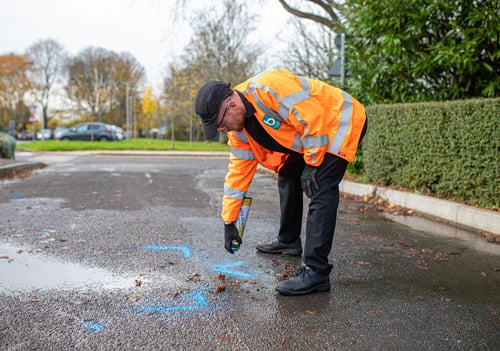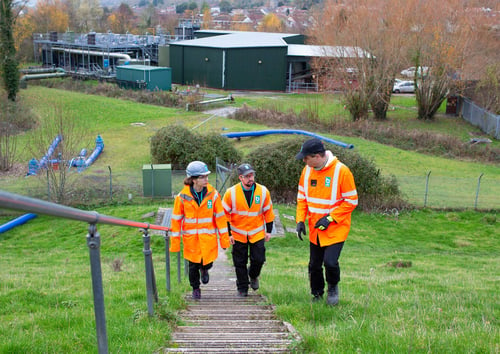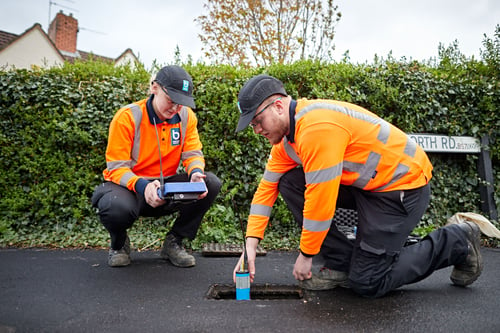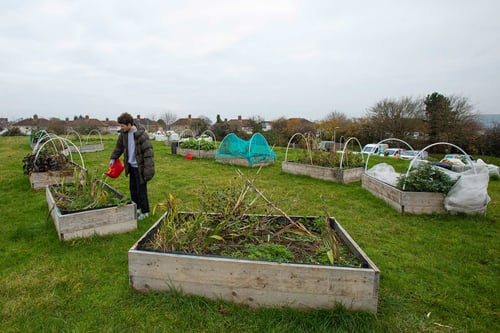About new mains
If you are looking to have a new main installed, it’s important that you’re aware of the specification that needs to be met for the work to be undertaken.

Arrange a date for mainlaying
If we are installing the mains for your development, you will need to contact us to arrange for the mainlaying to be included in our mainlaying programme.You will have been given the name and contact details for the Distribution District Manager/Network Site Agent who is responsible for the mainlaying on your site when we wrote to you with the finalised details for the scheme.
Once you have informed us which payment option you prefer and/or paid the financial contribution for the mains, please contact the relevant Distribution District Manager/Network Site Agent to arrange a mainlaying date.
Normally our mainlaying crews are booked up about two months in advance, but occasionally we get cancellations.

Trench specification
When developers requisition mains from us, they are encouraged to provide the trenchwork for any standard mainlaying within their site boundary. We will carry out mainlaying within the public highway or third-party land.Developers who choose to provide the onsite trenchwork should ensure that they adhere to the requirements listed below:
Developers should ensure that the trenches they provide allow for all mains to have 900mm of cover once the formation of the road/footpath/verge (under which the main is to be installed) is completed. This is a minimum figure; slight increases in cover may be allowed but must be agreed in writing prior to the installation of the main. Kerbing should be installed to give an indication of line and level for all installations.
The width of the required trench will primarily be dependent upon the diameter of the pipe to be installed. Developers will be advised of the required width during a site meeting which will take place prior to the mains being installed. However, the following is an indication of the minimum trench widths in which we will install mains:

Phasing
On larger sites it is often beneficial to phase the installation of any required mains. This does not mean that you have to apply for each phase separately – they can all be covered by a single application. You might want to consider phasing the installation of the mains if:Certain parts of the site will require water well in advance of other parts. We will not install mains and then leave them “dry”. We aim to get them into service as soon as possible, normally within two to three weeks. Once mains are made live we need to ensure that the water in them is turned over on a regular basis so that water quality is maintained. Mains are therefore not normally installed too far in advance of when water will be required.
It will not be possible to access all of the site for mainlaying at once because of scaffolding or other obstructions.

Contaminated land
Our policy on contaminated land and pipe choice was revised in spring 2013. The information we require from developers, for all sites, has now changed considerably.Site assessment reports (SARs) are required for any sites where you want the installation of standard polyethylene pipework to be considered. The production of a SAR does not, however, necessarily require intrusive investigations.
Read the Guidance on contaminated land leaflet for more information.

Timescales
Applications for new mains should be submitted a minimum of 12 weeks before you require mainlaying to commence onsite, regardless of whether you want to requisition the mains from us or self-lay them.We are often unable to begin processing applications when they are submitted to us because they are not complete, so please ensure that you fill in the whole application form and attach all necessary additional information and plans.
In many cases you will be provided with details of the finalised scheme, financial information and, where applicable, a self-lay agreement, within four weeks. This period may, however, be extended by a month or more, if it is necessary to undertake a significant investigation into how the development can be supplied.
If you are applying to self-lay infrastructure you should allow plenty of time for the agreement to be circulated around the relevant parties (developer, SLP, land owners, etc.) for signature. Mainlaying should not commence until all parties, including Bristol Water, have signed the agreement.

Tree & shrub considerations
No trees or large shrubs should be planted over or within 3.0 metres of our apparatus, or the proposed route of our apparatus, unless suitable root restriction methods are taken.If root restriction is to be considered it should extend at least 1.5 metres below finished surface level, in which case the minimum clearance between the wall of our pipeline/apparatus and the root restrictor can be reduced to 0.5 metres.
Developers should consult an arboriculturist for advice on the minimum clearances required between root protectors and trees/shrubs.
Should our pipeline have to pass between two trees/large shrubs, a minimum clearance of at least 3.0 metres must be maintained between their respective boles, even where root restrictors are installed.
Developers should include a planting layout with their application.
When installing mains in the vicinity of existing trees we will follow volume 4 of the NJUG guidelines – Guidelines for the Planning, Installation and Maintenance of Utility Apparatus in Proximity to Trees.